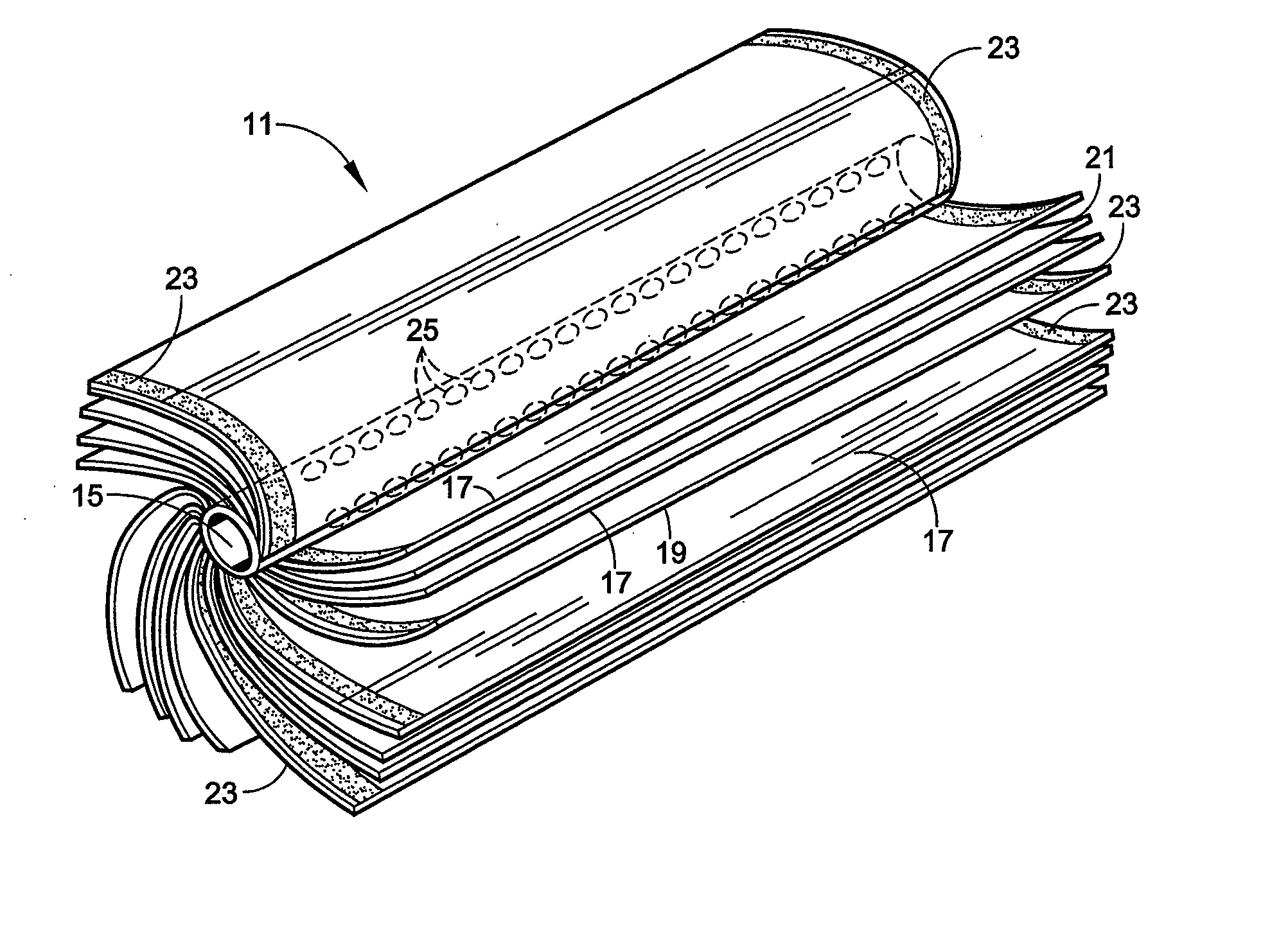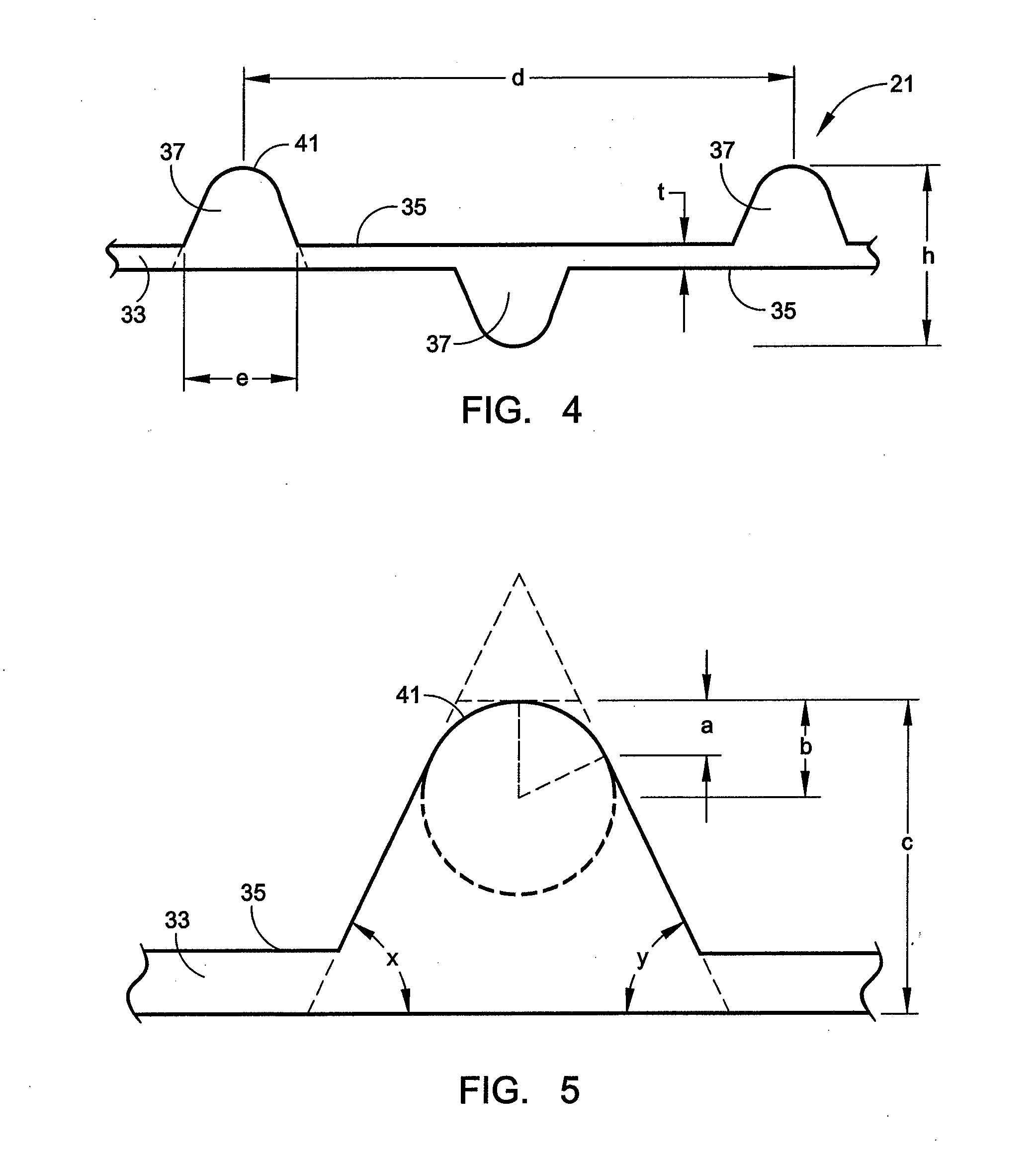High-density filtration module
a filtration module and high-density technology, applied in the direction of electrotrophoretic coatings, water treatment parameter control, coatings, etc., can solve the problem of high concentration of suspended solids, and achieve the effect of minimizing spatial requirements
- Summary
- Abstract
- Description
- Claims
- Application Information
AI Technical Summary
Benefits of technology
Problems solved by technology
Method used
Image
Examples
example 1
Comparison of High Density Modules Using Different Spacer Materials
[0036] To demonstrate the capability of a test module incorporating one embodiment of spacer material made according to the present invention for operating at much higher fluid flow velocities than a standard, prior art, spiral-wound module, hydrodynamic tests with purified water were performed using a system equipped for making such measurements. Two high density tubular modules of the spiral wound type were prepared for use in the tests; both were 4 inches in diameter and 40 inches in length and contained the same ultrafiltration membrane manufactured by Sepro, which is commercially known as PVDF-400 and has a MTC of about 400 Lmh / bar. The improved feed channel spacer material in the test module had a thickness “h” of 70 mil (0.070 in), whereas the thickness of the commercial spacer net in the standard module was 30 mil. As explained above, despite this difference in thickness, the two spacers display essentially ...
example 2
Comparative Examples for High-VOC Electrocoat Paint Wastewaters
[0040] To demonstrate the capability of a standard module, one similar to that used in Example 1 is first used to treat high-VOC electrocoat paint wastewaters for comparative testing. This spiral wound module is 8 inches in diameter and 40 inches in length and contains the same PVDF-400 ultrafiltration (UF) membrane. The thickness of the commercial spacer net in this standard module is again about 30 mils. The total membrane area (A) in the standard 8 in. diameter module is about 275 sq. feet.
[0041] Non-agglomerating, high-VOC paint wastewater from an electrocoat operation is fed to the module at an inlet pressure of 50 psig and a flow rate (Q) of 70 gal / min. A filtrate rate (F) of 2.5 gal / min is obtained at a pressure drop of 30 psi, as set by a downstream control valve. The value of F for this standard module corresponds to a permeate flux of 22 Lmh.
[0042] For comparison purposes, another system is provided which em...
example 3
Treatment of Agglomeration-Prone, Low-VOC Electrocoat Paint Wastewaters
[0044] A. A spiral wound module essentially similar to that of Example 2 is employed to treat an agglomeration-prone, low-VOC paint wastewater from an electrocoat operation at an inlet pressure of about 50 psig; the wastewater has a suspended solids concentration of about 100 g / L and a viscosity of about 30 cps. From the onset, its performance is unstable and then declines, due to agglomeration of paint solids on the surface of the membrane and in cross members of the feed channel spacer net; this results in a rapid reduction of filtrate rate and an increase in pressure drop. Within two days of operation, the filtrate rate is reduced to less than 1 gal / min, and the pressure drop increases to greater than 40 psi.
[0045] B. The tubular system of Example 2 is used to treat the same wastewater as above at an inlet pressure of about 70 psig. Its performance is essentially the same as in Example 2. It continues to pro...
PUM
| Property | Measurement | Unit |
|---|---|---|
| Fraction | aaaaa | aaaaa |
| Fraction | aaaaa | aaaaa |
| Fraction | aaaaa | aaaaa |
Abstract
Description
Claims
Application Information
 Login to View More
Login to View More - R&D
- Intellectual Property
- Life Sciences
- Materials
- Tech Scout
- Unparalleled Data Quality
- Higher Quality Content
- 60% Fewer Hallucinations
Browse by: Latest US Patents, China's latest patents, Technical Efficacy Thesaurus, Application Domain, Technology Topic, Popular Technical Reports.
© 2025 PatSnap. All rights reserved.Legal|Privacy policy|Modern Slavery Act Transparency Statement|Sitemap|About US| Contact US: help@patsnap.com



